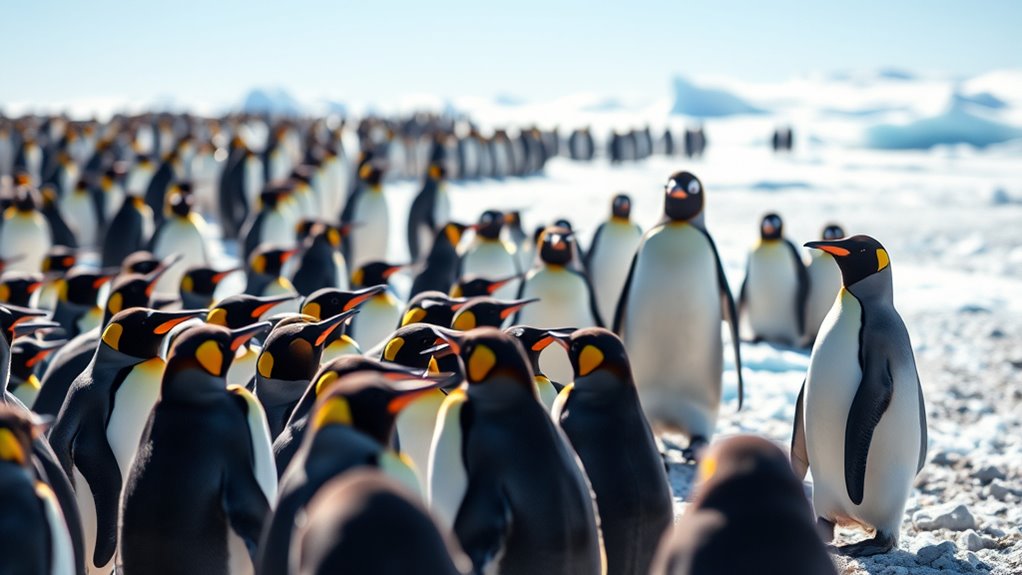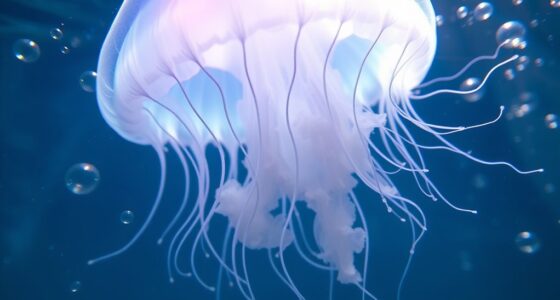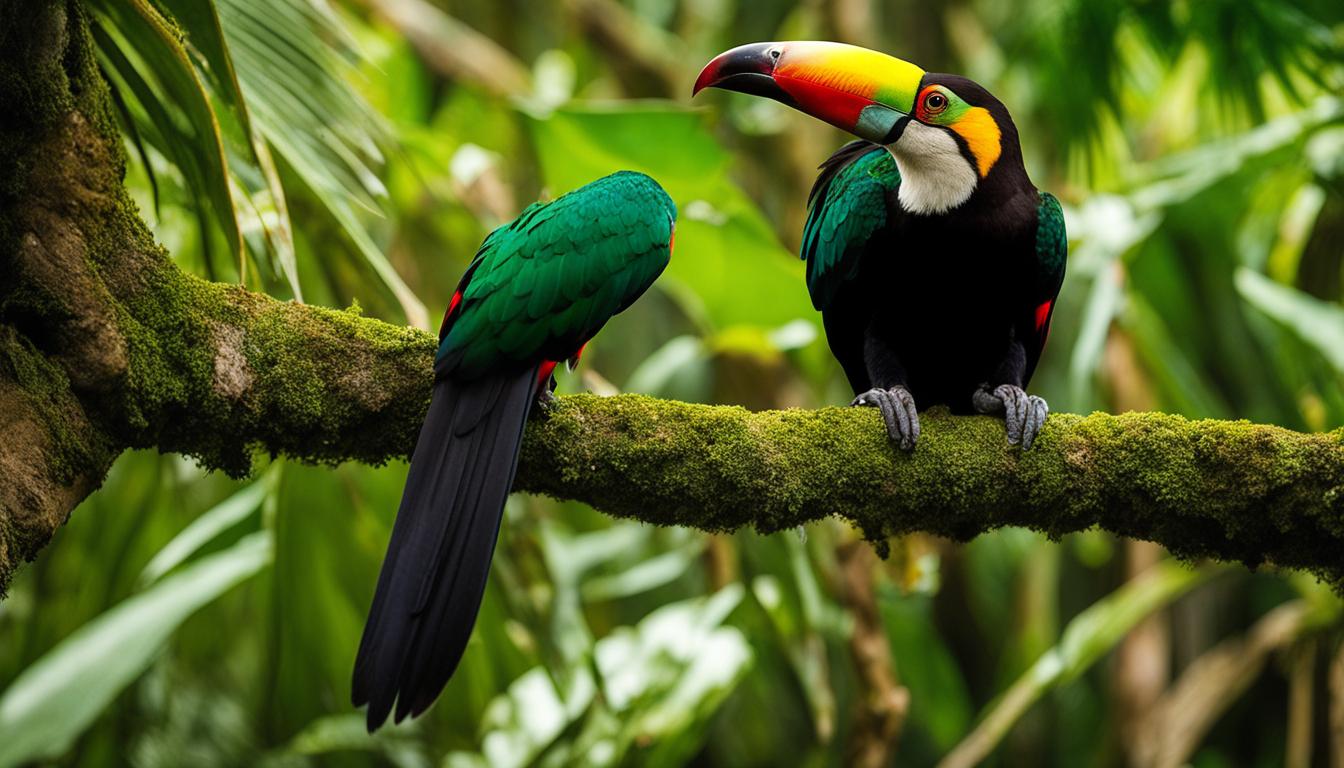There are 18 recognized species of penguins worldwide, each showcasing unique traits and adaptations. These species thrive in various environments, from the icy Antarctic to warmer coastal areas like the Galápagos. You might find it fascinating how different their habitats and survival strategies are. Understanding these differences helps appreciate their remarkable diversity. Stick around to discover more about their adaptations and the roles these fascinating birds play in their ecosystems.
Key Takeaways
- There are 18 recognized species of penguins worldwide.
- Each penguin species has unique adaptations suited to its environment.
- Penguin species are distributed across diverse habitats, from Antarctica to warmer regions.
- Recognition of different species enhances understanding of penguin diversity.
- Penguins exhibit various foraging behaviors tailored to their specific diets and habitats.

Have you ever wondered how many species of penguins roam our planet? Penguins are fascinating creatures, and their diversity is more extensive than most people realize. Currently, there are 18 recognized species of penguins, each adapted to thrive in various environments, from the icy shores of Antarctica to the temperate coasts of South America. Understanding these species can deepen your appreciation for their unique adaptations and lifestyles.
Discover the incredible diversity of penguins, with 18 species adapted to thrive in unique environments across the globe.
The penguin habitat varies markedly among species. For instance, the Emperor penguin, the largest of them all, primarily resides in the harsh, frigid climates of Antarctica. They’re known for their remarkable ability to endure extreme cold, thanks to their thick layers of blubber and dense feathers. On the other hand, the Galápagos penguin, the only species that ventures north of the equator, enjoys a much warmer climate. They inhabit the Galápagos Islands, where the ocean currents create a unique environment for them to thrive. Whether it’s the icy expanses or the more temperate regions, each penguin species has evolved to fit perfectly into its specific habitat.
When it comes to penguin diet, these birds are primarily carnivorous. Most penguins feast on a diet rich in fish, squid, and krill, which they hunt in the ocean. The type of prey they consume can vary depending on their habitat and the availability of food sources. For example, the Adélie penguin, found along the Antarctic coast, mainly feeds on Antarctic krill, while the Magellanic penguin tends to eat small fish and crustaceans. You might be surprised to learn that penguins are excellent swimmers, using their flippers to propel themselves through the water with remarkable agility. This ability allows them to catch their prey efficiently, showcasing their adaptation to marine life.
Moreover, each species has unique foraging methods. Some, like the African penguin, dive deeper in search of food, while others prefer to hunt close to the surface. Their feeding habits are closely tied to their habitats, as changes in water temperature and availability of prey can considerably impact their survival. Furthermore, penguins are a prime example of vibe coding in nature, showcasing how various species adapt to their environments through unique traits and behaviors.
Frequently Asked Questions
What Is the Habitat of Different Penguin Species?
Different penguin species thrive in various habitats, from icy Antarctic shores to temperate coastal regions. You’ll find them nesting on rocky cliffs and grassy plains, depending on the species. During migration, they often travel significant distances to find food or suitable nesting sites. For instance, Emperor penguins journey across harsh environments, while others may stay closer to their breeding grounds. Understanding their habitats helps you appreciate their unique adaptations and survival strategies.
How Do Penguins Adapt to Climate Change?
Penguins adapt to climate change like seasoned travelers steering through shifting landscapes. You’ll notice their migration patterns change, guiding them to cooler waters as temperatures rise. During breeding seasons, they adjust their nesting behaviors, seeking safer, more stable environments to protect their young. These clever birds rely on instinct and cooperation, ensuring their survival despite the unpredictable storms of a warming world. By evolving together, they demonstrate resilience in the face of adversity.
What Are the Primary Threats to Penguin Populations?
The primary threats to penguin populations include climate change, habitat destruction, and predator threats. You’ll notice that as their habitats shrink, they face increased competition for food and nesting sites. Additionally, predators like seals and birds can markedly impact their numbers. To help, you can support penguin conservation efforts aimed at protecting their habitats and reducing human impact. Every little action counts in ensuring these charming birds thrive in a changing world.
How Do Penguins Communicate With Each Other?
Penguins communicate primarily through vocalizations and visual signals. You’ll notice they use a variety of sounds to express emotions or alert others to danger, with each species having distinct calls. When you observe them, watch for their body language, like flapping their wings or posturing, which adds another layer to their communication. Together, these vocalizations and visual signals help them maintain social bonds and coordinate during feeding and nesting.
What Do Penguins Eat in the Wild?
In the wild, you’ll find penguins diving like arrows into the ocean, hunting for fish, krill, and squid. These agile swimmers rely on their keen eyesight to spot prey while steering through icy waters. During breeding rituals, they’ll often feast on abundant food sources to build up their energy reserves. After all, a well-fed penguin is better prepared to care for its young, ensuring the survival of their species in the harsh environment.
Conclusion
In total, there are 18 species of penguins, each with its own unique traits and habitats. Did you know that the Emperor Penguin is the largest, standing up to 4 feet tall? That’s impressive! With their charming waddles and distinct personalities, penguins have captured our hearts. Whether they’re diving in icy waters or huddling together for warmth, these incredible birds remind us of the beauty of nature. Dive deeper into their world, and you’ll find endless fascination!









